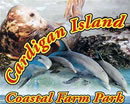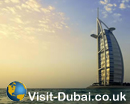Of course, Qatar is only about 11,427 square kilometres in area, with a population of 744,029 in 2004.
Local Qataris only accounted for 20 per cent of this figure. The remainder of the population consisted of expatriates, mainly from the Indian subcontinent, but also from other Arab countries, Europe and the USA.
By July 2005, the population estimate was 850,000, according to the CIA World Factbook.
Expatriates flood in because the economy, particularly in oil, gas and construction, is really booming.
Qatar is currently reaping huge benefits from sky-high oil and gas prices. It is using oil and gas revenue to invest in tourism as well.
The Government-owned hydrocarbon business, Qatar Petroleum, is investing $75 billion dollars in the country's oil and gas facilities and infrastructure.
Projects include the expansion and upgrading of facilities at Dukhan City, [which was Qatar's first oil centre, built around the Dukhan Field]; Mesaleed Industrial City and Halul Island.
Ras Laffan Industrial City is already the world's largest Liquefied Natural Gas [LNG] export facility. A new $1.6 billion plant processes gas to be pumped 370km through a dedicated pipeline between Qatar and Abu Dhabi.
Apart from the Dukhan Field, Qatar Petroleum produces oil from two off-shore Gulf fields, Bul Hanine and Maydan Mahzam. Off-shore gas comes from the North Gas Field in Qatar waters in the Arabian Gulf.
In addition, Qatar Petroleum has developed various offshore fields in co-operation with major international oil and gas companies through production-sharing arrangements. All of these fields are located within Qatar's territorial waters.
In addition to the crude oil development, emphasis is on the development of the large non-associated gas reserves of North Field.
Three projects, viz North Field Alpha; Qatargas and Rasgas, are already tapping the North Field, while several other major projects are in various stages of completion for implementation.
Oil production in the Dukhan Field started in 1949. The field is approximately 60km by 25km wide.
Qatar Petroleum retrieves crude oil, associated gas, condensate and non-associated gas from this field.
There are four major hydrocarbon reservoirs in Dukhan Field, three of which produce oil and the fourth produces non-associated gas.
In 2006, Qatar had natural gas reserves of 910 trillion cubic feet, ranking Qatar third in the world, behind Russia and Iran.
Qatargas hopes to export 17.3 million tonnes of LNG per annum by 2009 and 25.2 million tonnes by 2012, by which time, Qatar will be the world's largest producer of LNG.
A major new LNG terminal at Milford Haven, Pembrokeshire, West Wales, accommodates shipping bringing crucial Liquified Natural Gas into the UK from the Arabian Gulf.
The gas is then transported by large pipes to Gloucestershire in England, via the Towy Valley of Carmarthenshire and the Brecon Beacons National Park in Powys.
Qatar gas, especially, is extremely important for the future security of energy supplies to the UK, since wind energy is trivial, unreliable and often non-existent, due to the vagaries of the wind.




